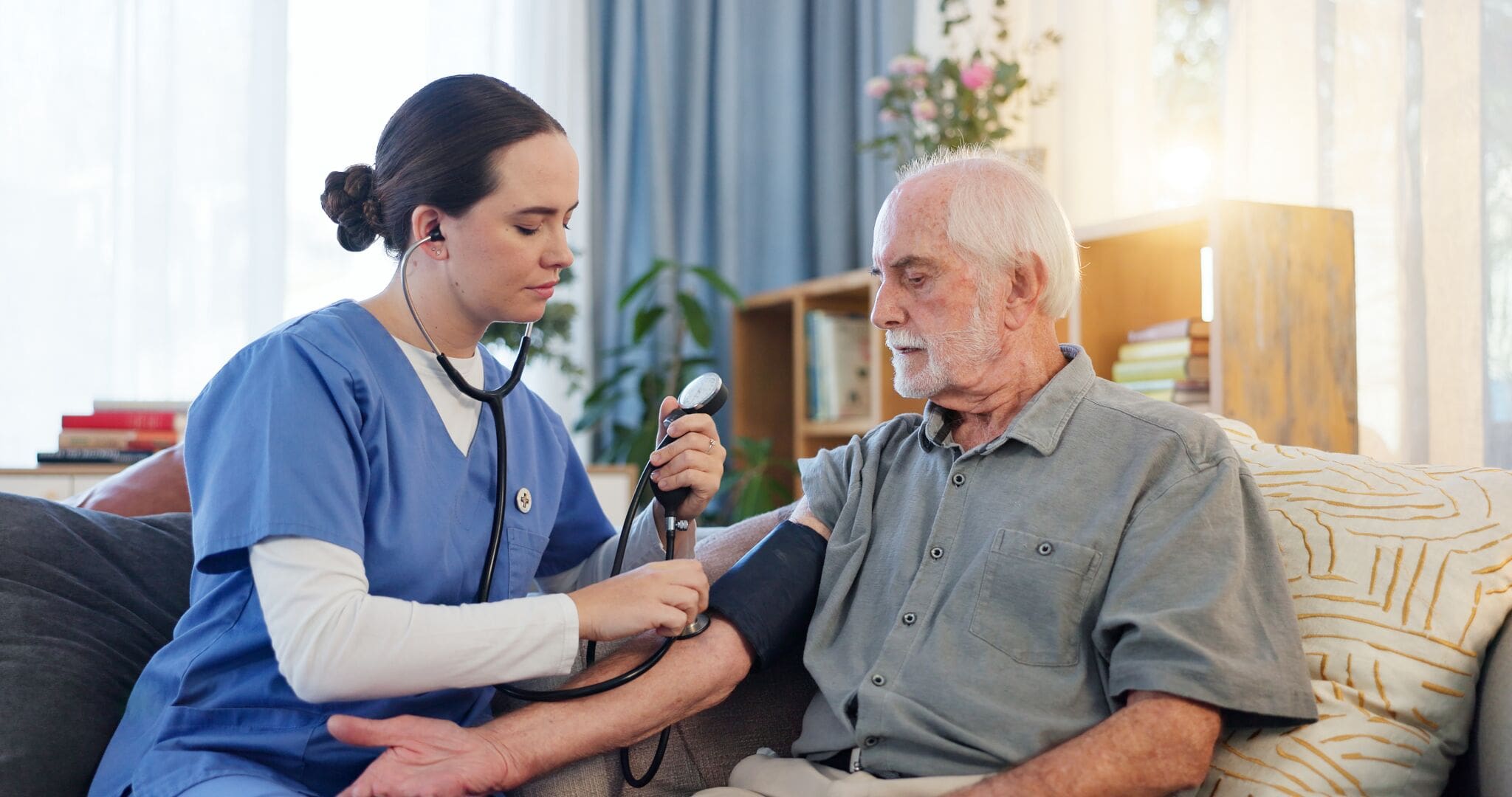In this article
What are Gender Health Inequalities?
Health inequalities are gaps in health outcomes and access to treatment and services that exist between different groups. When it comes to gender health inequalities, these differences occur between men and women.
The World Health Organisation (WHO) differentiates between sex and gender, defining sex as biological (relating to chromosomes and physical characteristics) and gender as a social construct (norms, values and stereotypes). Sex and gender are interconnected and both can result in inequalities in healthcare.
Our biological sex may have an effect on our health, for example making us more prone to certain diseases, influencing how we respond to treatment, affecting how our hormones function and how the ageing process changes our bodies. Men and women also have vastly different experiences during the reproductive process.
Sometimes, gender health inequality can exist due to harmful assumptions based on our biological sex. This can result in delays, misdiagnoses and missed opportunities for treatment. For example, someone may assume a woman is not having a heart attack due to longstanding myths that men and women experience different symptoms. Conversely, a man who finds a lump may assume it is not physically possible for him to have breast cancer because he believes it only affects women. In this instance, his incorrect assumptions that he is safe from a disease because he is male cause him to delay getting treatment.
Often, gender health inequality happens based on attitudes, perceptions or beliefs. This includes ideas or perceptions around gender norms, gender normative behaviour and gender stereotypes. Gender roles within our families and societies can also affect our behaviour, our physical and mental health, as well as our willingness to seek, or engage with, healthcare.
Our gender can affect health outcomes in various ways, for example:
- Our ability to access treatment
- Our willingness to visit the doctor
- How seriously a nurse or doctor takes our issues
- How likely we are to be prescribed pain relief
- Whether we face shame, stigma and judgement due to our health issues
- Whether we can pay for medical appointments, diagnostic tests or medication
Perceptions of gender and gender roles vary between societies and may change over time. They are often influenced by culture, religion and historical practice.
Gender inequality exists across all parts of the world, although it is often most apparent in some developing countries. Gender health inequality is most evident within societies that remain heavily patriarchal, where women and girls are routinely devalued and dehumanised and viewed as lesser than their male counterparts.
Women and girls in many societies face disadvantage, for example they may:
- Be at greater risk of experiencing (or being exposed to) domestic and sexual violence
- Have less control over their bodily autonomy than men (including their reproductive rights, choice of when and who they marry, decisions about working outside of the household)
- Be less likely to continue their education past adolescence
- Be less likely to be in employment (particularly well paid employment)
- Be viewed by those around them as less worthy than their male counterparts
- Have lower literacy rates than males (including digital literacy)
Women and girls also face additional inequalities around reproduction and sexual health for example they are more likely to face:
- Unintended pregnancies
- Sexually transmitted disease (including HIV and HPV that can cause cervical cancer)
- Stigma for having multiple sexual partners
Biology is, in part, responsible for these discrepancies (as only biological women can experience pregnancy or have a cervix), however attitudes around gender also play their part. For example, women and girls are at a significantly higher risk of experiencing sexual violence, coercion and forced marriage than men and boys. Additionally, they may be afraid to seek help and treatment due to familial and societal attitudes towards sex, especially sex outside of marriage.
Poverty, gender and health inequality
Inequality is often most evident between socio-economic groups, with people living in poverty experiencing higher rates of illness and disease than those who are more affluent. This intersects with gender health inequality and creates a complex picture of inequality, with poorer women experiencing worse outcomes than their richer counterparts.
It is important to note, that women in general experience gender health inequalities, regardless of social status. Women also face barriers within work and education. In many societies, women have a lower status and may face inequality at school and the workplace.
Even in the western world where women are said to have gained equal rights, the gender pay gap still exists. Women remain underrepresented in senior job roles in certain industries, especially in STEM careers. In the UK, women are more likely to be in unreliable, part-time work than men with 36% of women in employment working part time compared with only 14% of men.
Financial barriers can prevent women accessing the right healthcare, for example due to lack of funds for transportation or to pay for prescriptions. Additionally, women in precarious work or on zero-hour contracts may worry about taking time off to recover from illness, causing them to delay treatment or ignore the problem all together and try to carry on as normal.
Non-gender conforming individuals
When individuals do not fit into or conform to established gender norms within a society, they often face isolation, stigma and discrimination – all of which can have an adverse effect on a person’s health.
Data suggests that transgender individuals experience high levels of mental health illness, which may be linked to the discrimination they experience, including in healthcare settings. Additionally, people who perceive that they will be stigmatised or ridiculed are less likely to reach out for help, especially if they have had bad experiences in the past. This can leave some of the most marginalised people in society with additional vulnerabilities.
Pregnancy and maternity
As only biological women experience pregnancy and childbirth, they are obviously disproportionately affected by the consequences of having a baby. Women routinely report not feeling listened to during pregnancy and childbirth, leading some women to experience traumatic births and more than 1 in 10 experiencing post-partum depression.
Maternal mortality remains unacceptably high across the globe:
- A maternal death occurred almost every 2 minutes in 2023
- Every day in 2023, more than 700 women died from preventable causes related to pregnancy and childbirth
- In 2022, shocking statistics were revealed that showed the leading cause of death of women who are pregnant or have recently given birth in the USA to be homicide
- Levels of maternal mortality in the UK are amongst the worst in Europe, with black women more than twice as likely to die during, or soon after, childbirth
Receiving the correct care during pregnancy, delivery and post-partum, including having access to clean surgical equipment, skilled professionals and the right antibiotics will save the lives of women and newborns.
To improve outcomes, women must be treated as autonomous human beings, not simply the carrier of a child. Expectant and new mothers deserve to feel:
- Listened to
- Humanised
- Believed
- Valued
- Taken seriously
Inequality and caring responsibilities
Across the globe, women often end up doing the bulk of caring responsibilities for those around them. In some cultures, daughters are expected to look after their parents as they age, both physically and financially.
In most countries, women are still expected to do the bulk of the childcare, especially whilst the children are young. Additionally, they are usually expected to do the majority of the household chores, even if they work full-time.
- ONS data suggests that women carry out an overall average of 60% more unpaid work than men
- A study of 1800 men and women in the UK found that women spend 17 hours a week on average on domestic chores, while men spend only 6 (with one in five men admitting to doing nothing at all to help in the house)
- According to the British Medical Journal (BMJ), women carry out three quarters of the world’s unpaid work – equating to 11 billion hours per day
The gendered nature of domestic and reproductive roles can keep women trapped and invisible. When women are consistently expected to look after others, they are less likely to look after themselves, failing to prioritise their own needs which may lead to stress and burnout.
Women who function as main caregivers may also be less likely to engage in help seeking behaviours such as making doctor’s appointments for themselves, attending check-ups or taking prescribed medication.

How does gender inequality affect mental health?
The relationship between gender and mental health is a complicated one. Some research suggests that women are at a greater risk of developing serious mental health problems, however, gender norms around masculinity often prevent men reaching out for help.
Mental health problems affect both men and women, but not in equal measure. The following statistics are taken from The Big Mental Health Report 2024. This report collates data on mental health problems, stigma and discrimination, alongside people’s real-life experiences to provide a snapshot of the state of mental health in England and Wales right now:
- In 2023, 6069 registered deaths were caused by suicide – 75% of these were men
- Women in England (19%) were more likely to report feelings of depression and anxiety compared with men (12%)
- In young people aged 17–25 years, young women (31%) were more than twice as likely to have a possible mental health condition compared to young men (13%)
- Rates of eating disorders were four times higher for women than men
- Women who experience male violence are at greater risk of developing mental health problems, including PTSD
- Of the 1.91 million people in contact or referred to a mental health service, over half were female (52%) and nearly 46% were male
The report also showed a significant correlation between deprivation and poverty and poor mental health outcomes for both males and females.
Gender related factors that affect help seeking behaviour and create barriers to healthcare for mental health include:
- Toxic phrases such as ‘man up’ or ‘boys don’t cry’
- Writing off women experiencing mental health issues as simply hormonal or hysterical
- Attitudes toward motherhood and childbirth (for example doctors incorrectly diagnosing post-natal depression as ‘baby blues’)
- Fears around stigma and judgement based on norms and stereotypes
How can gender inequality be reduced in health?
It is important to understand how sex and gender can affect health inequalities and influence outcomes. Closing the gaps between men and women can improve treatment options and lead to a better quality of life for everyone.
Preventing disease and ill health is key to addressing gender health inequality. It is vital that everyone living in a community has access to resources to address their most basic needs. Governments, local authorities, charities and NGO’s should work collaboratively to provide and promote resources that allow equal access to:
- Clean water
- Hygiene resources
- Sanitation
- Nutrition
- Essential medicine
The role of scientific research
We know that women often suffer from poorer quality healthcare than men and that there are some issues that only affect biological women, such as menstruation and the menopause. Women all over the world would benefit from better, more in-depth and more representative research being done into the biological and hormonal issues that affect them.
We also need to let go of antiquated notions of ‘women’s problems’ and the idea that women simply have to suffer through painful periods, depressive episodes or night sweats because they have done so throughout history.
Women’s health remains significantly understudied, meaning that they often experience care that is not tailored to their needs. More scientific research needs to be done into the issues that only affect women in order to find solutions and treatments to improve women’s quality of life.
Key areas of study should include:
- Endometriosis
- Links between mental health and hormonal imbalance
- Perimenopause and menopause
- The rise in early puberty in females
Women also require better representation within clinical trials to ensure that the medication they are prescribed is as effective as possible for them.
More research is needed to improve our understanding of the implications of unpaid care giving on mental health outcomes on a global level, although studies already conducted have shown a corelation between unpaid work and poorer mental health for women. A better understanding of the relationship between the two could help to inspire both societal and policy change that may provide vital support for the women who are struggling to balance their many responsibilities.

How to address gender inequality in health
Gender inequality creates barriers for women and girls who may struggle to access critical health information, accurate advice, effective treatment and vital vaccinations.
Barriers that women and girls face may include:
- Lack of mobility (this particularly affects those living in rural areas)
- Lack of autonomy or the ability to make their own decisions (being controlled by their family or husband)
- Lower literacy rates in some countries that mean they cannot read information given to them in leaflets, letters or online
- Problems accessing finance or health insurance
Simple steps can help to overcome these barriers for example mobile clinics and greater education within communities. Other barriers are more complex to address, for example if every woman had her own bank account this could help to remove financial barriers, however, normalising this within some societies may prove challenging. Such changes are likely to be met with some resistance, especially from men who are used to having all the power.
Factors that we know contribute to gender health inequalities include:
- Stereotypes and preconceptions, for example that women are more dramatic than men or prone to hysteria
- Underrepresentation of women within senior healthcare roles and in clinical trials
- Poverty and lack of access to basic resources
- Lack of scientific research understanding about conditions that only affect women
- Lack of understanding of how and why the same conditions can manifest differently in men and women
Both practical steps and more cultural or societal shifts are needed to address gender inequality within healthcare.
Practical tips include:
- Allowing women access to family planning services
- Training healthcare workers to better understand what is meant by gender health gaps and how to overcome prejudice
- Better training for midwives and doctors in maternity facilities
- Improving childcare options to allow women more free time or the option to work outside of the household
- Expanding scientific studies and clinical trials to include representative samples of both men and women
- Increasing funding for women and children’s services
Necessary societal and cultural changes may include:
- Challenging and disrupting social norms that place women as main caregivers and unpaid domestic workers
- Normalising help seeking behaviour for all
- Moving away from structures based on patriarchy and establishing women as equal participants in society
Why gender health inequality should also concern men
Although we know that gender health inequality disproportionately affects women and girls, it should also concern men and not only due to the fact they may have grandmothers, mothers, aunties, sisters and daughters.
Harmful stereotypes around masculinity can encourage men to engage in risky behaviour that may damage their health, such as:
- Smoking and drinking
- Drug use
- Having multiple sexual partners
- Violence and aggressive behaviour (including gang related violence or crime)
- Driving too fast
Harmful gender stereotypes may also discourage men from seeking help or health care. A man’s risky behaviour can also have an effect on the women around them, putting them at risk of sexually transmitted disease, unintended pregnancy and interpersonal violence. Their lack of participation in childcare and domestic work may cause women to be overburdened, stressed and unhappy.

Why is the Relationship Between Gender and Health Important?
Understanding the relationship between gender and health is important because it can help us to look for patterns and see where inequality exists.
A healthier and more equal society is a safer, happier and more productive society. By understanding why and how health gaps occur we can begin to address inequality, improve treatment options, eliminate barriers and make scientific advancements that improve life for future generations.






